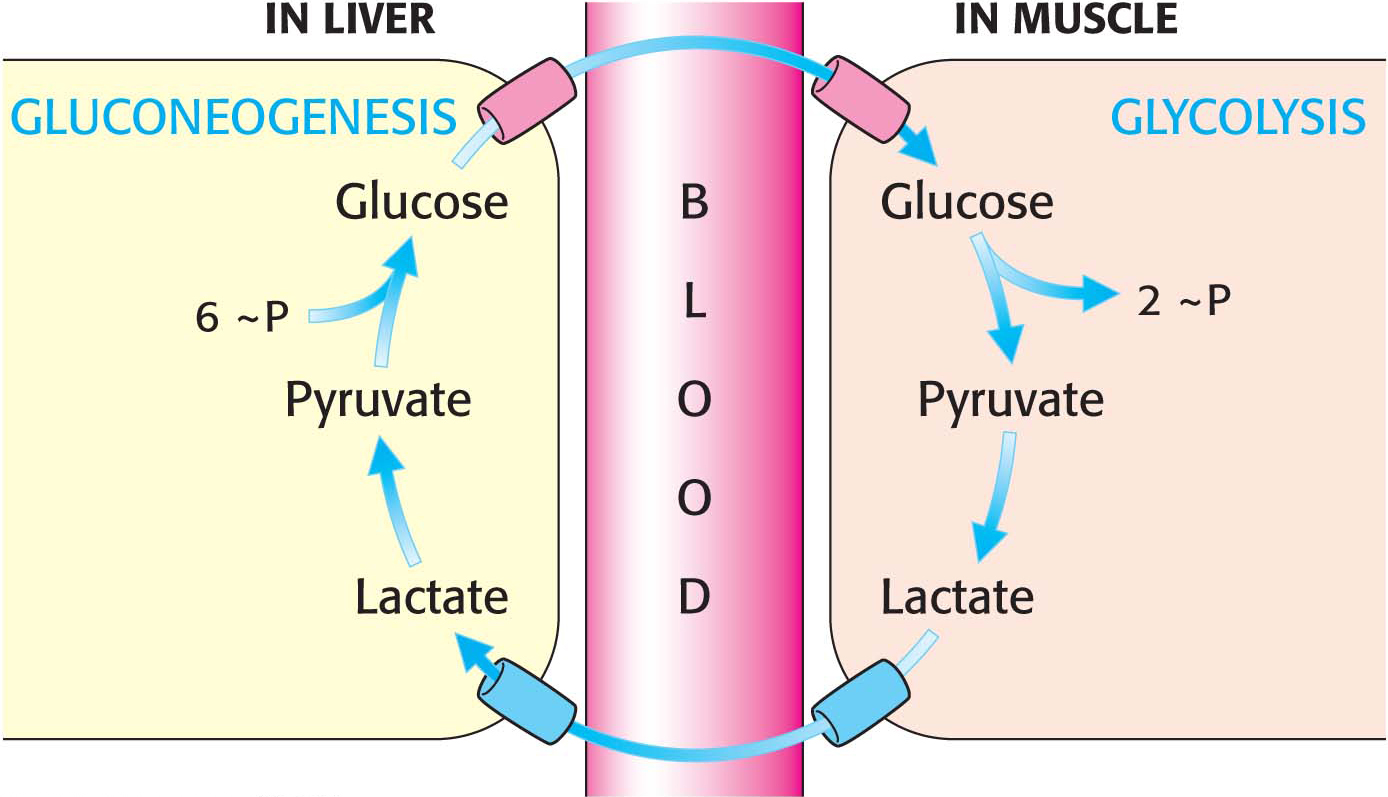
17.3 Metabolism in Context: Precursors Formed by Muscle Are Used by Other Organs
Lactate produced by active skeletal muscle and red blood cells is a source of energy for other organs. Red blood cells lack mitochondria and can never oxidize glucose completely. Recall that, in contracting type IIb skeletal muscle during vigorous exercise, the rate at which glycolysis produces pyruvate exceeds the rate at which the citric acid cycle oxidizes it. In these cells, lactate dehydrogenase reduces excess pyruvate to lactate to restore redox balance. However, lactate is a dead end in metabolism. It must be converted back into pyruvate before it can be metabolized. Lactate and protons are transported out of these cells into the blood. In contracting skeletal muscle, the formation and release of lactate lets the muscle generate ATP in the absence of oxygen and shifts the burden of metabolizing lactate from muscle to other organs. The lactate in the bloodstream has two fates. In one fate, the plasma membranes of some cells, particularly cells in cardiac muscle and slow-
